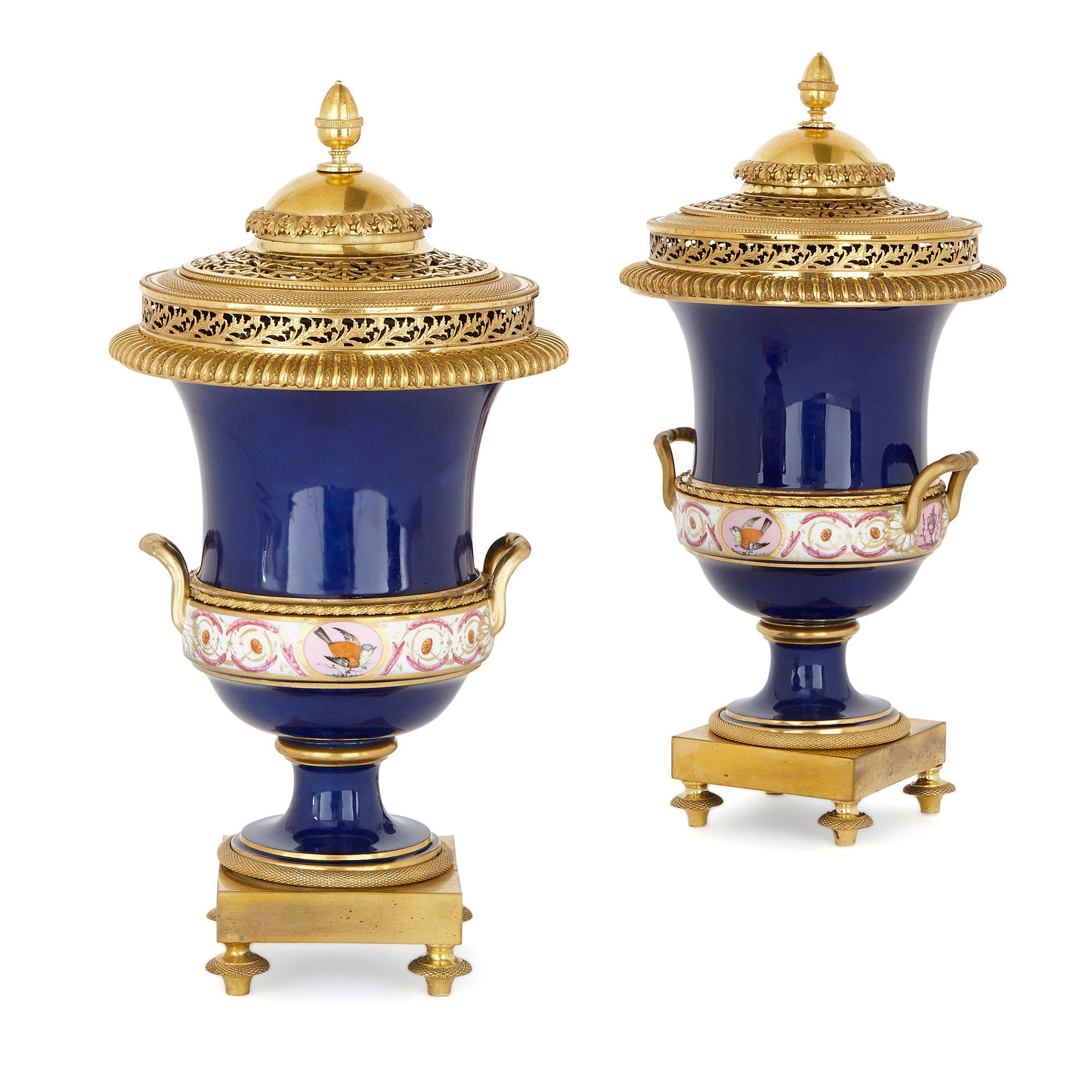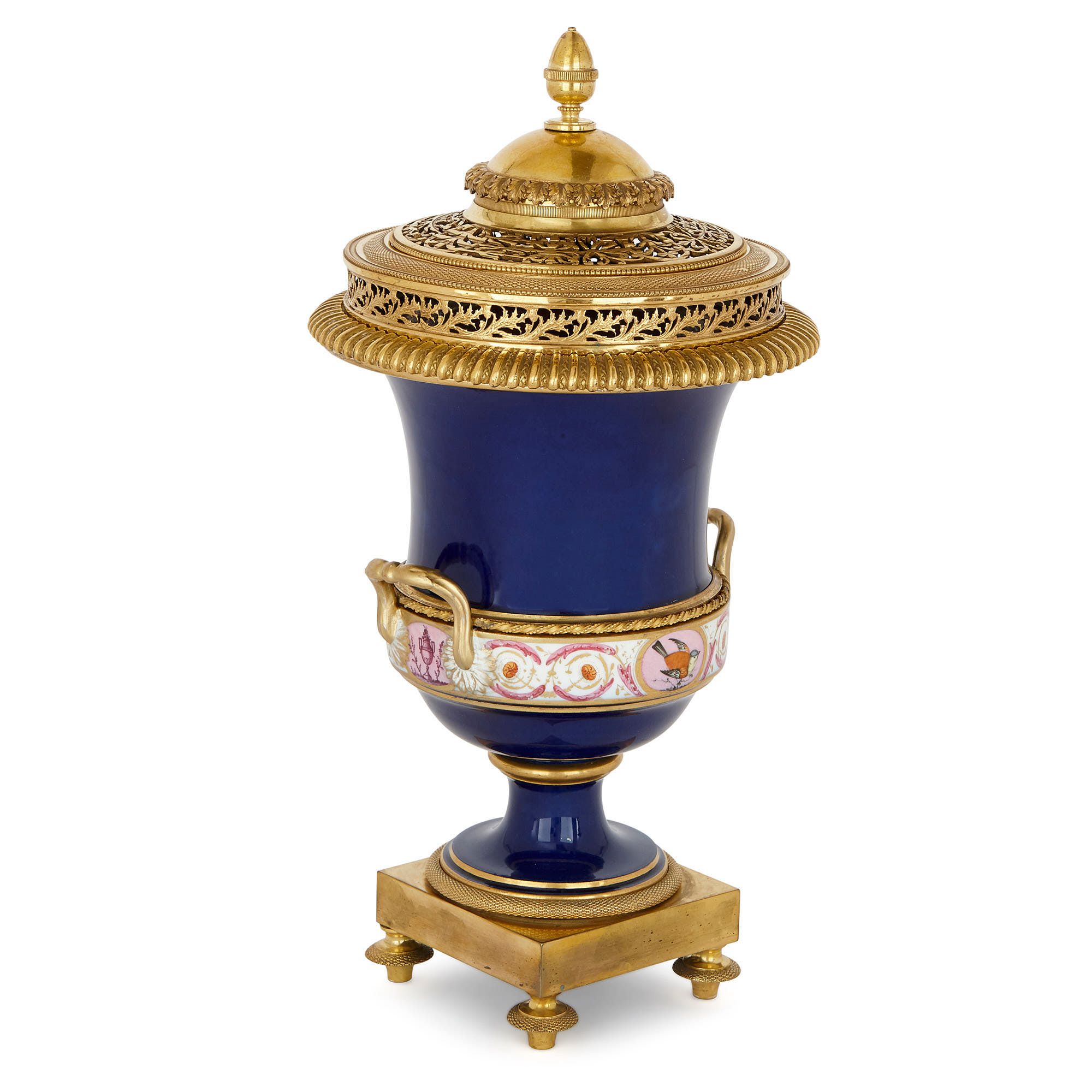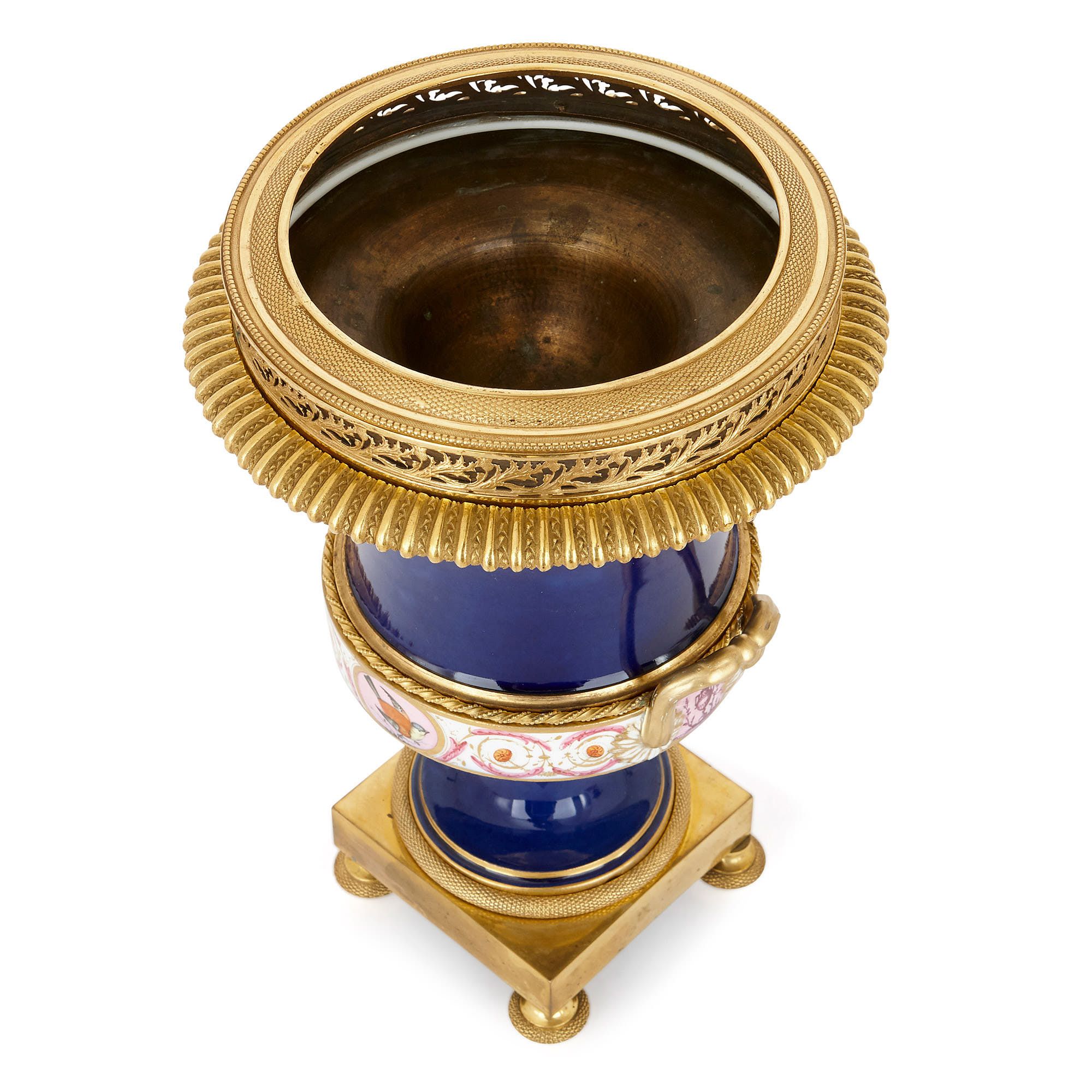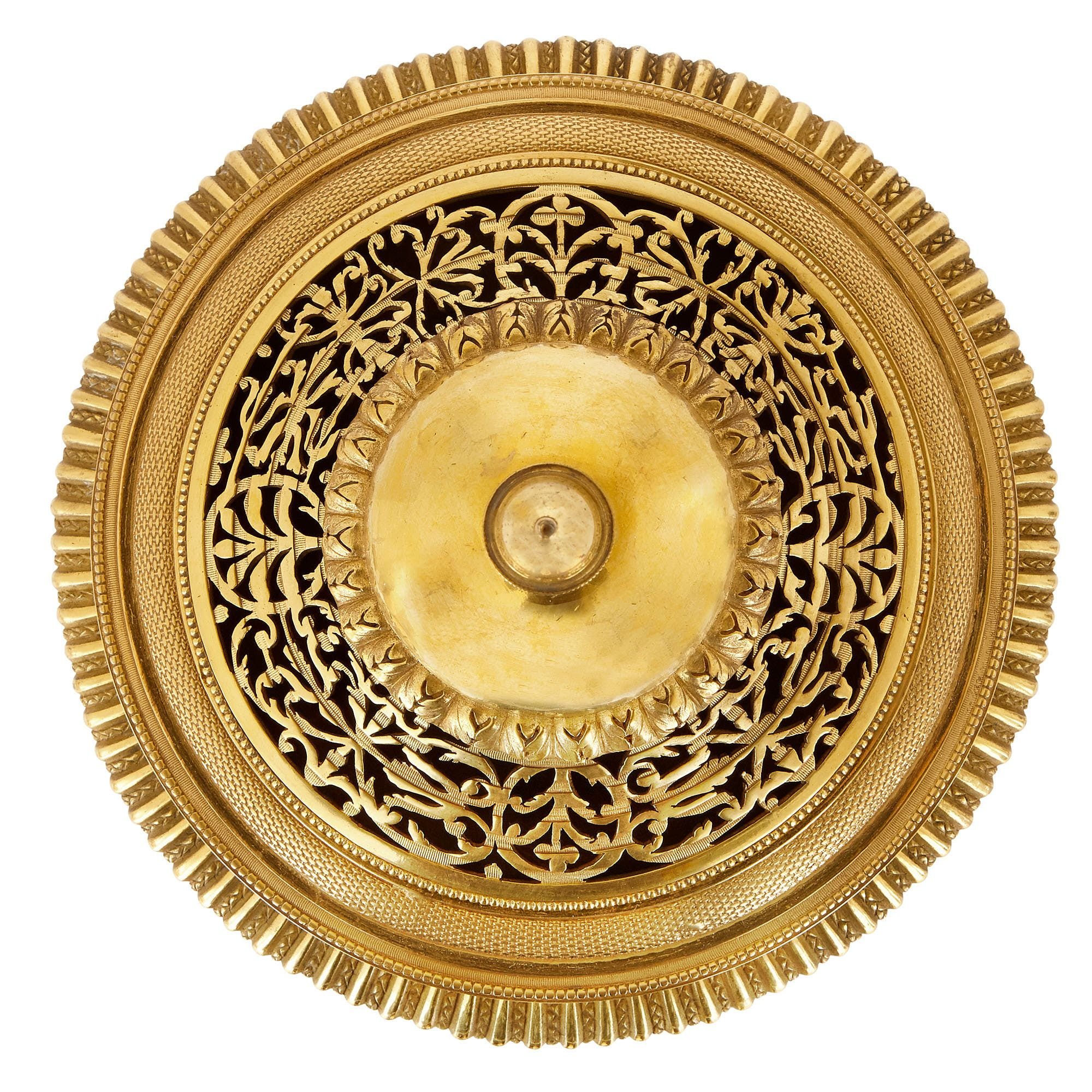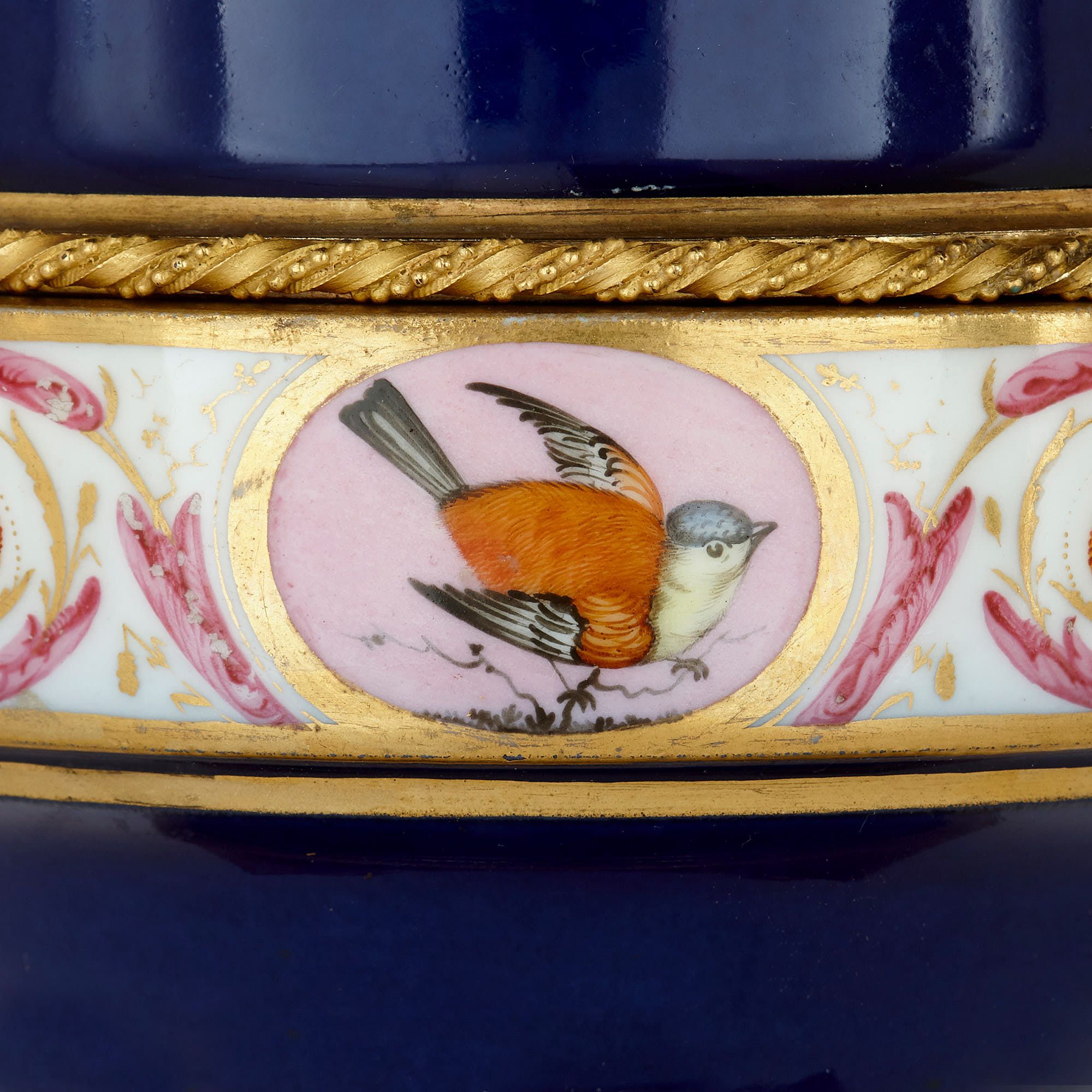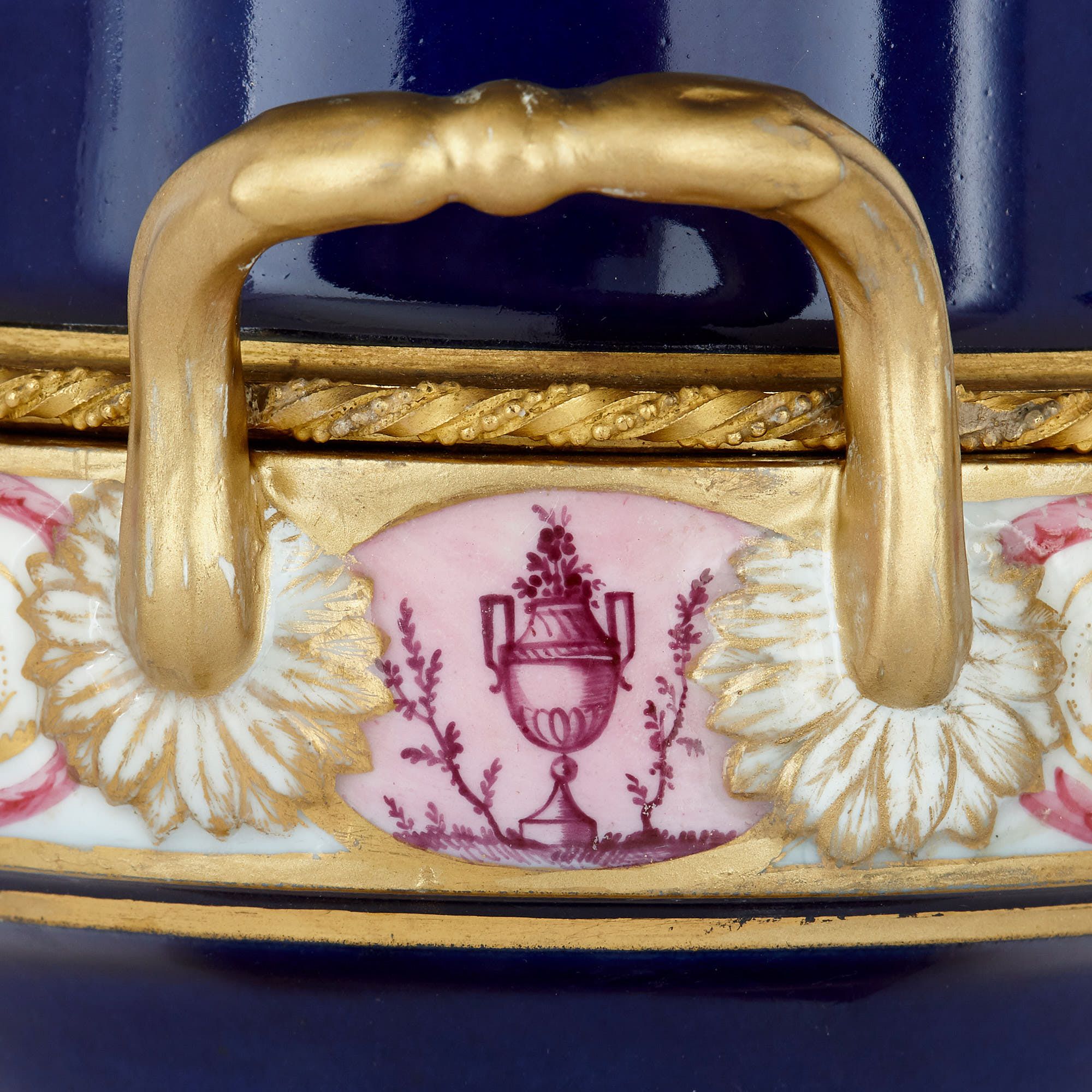The porcelain vases are set on ormolu (gilded bronze) plinths, raised up by toupie feet. The bodies are of campana form, and are fitted with twin ormolu handles. They also feature pierced lids with acorn finials, again crafted from ormolu.
Each vase is placed on a square-shaped plinth, which is supported on four feet. The porcelain foot of each vase is encircled by a textured band of ormolu. The porcelain of the foot is painted a deep blue colour, which is articulated around its lower rim and neck with parcel gilt belts.
Above, each body is of campana form, which means that the body imitates an upward-turned bell. A band of ornament wraps around the middle of each vase, featuring orange flowers and pink foliage swags, set against a white ground. A chaffinch is painted at the centre of each band. Two small ormolu handles spring from flowers which are painted onto the sides of each piece. In the space between these flowers, there is, on each vase, a pink-painted medallion depicting a classical vase filled with flowers. A twisting ormolu cornice extends around the top of the painted band on each piece.
The blue porcelain neck of each vase flares outwards, and is topped by a circular ormolu lid. Each cover is pierced with foliate forms and decorated with fluting, beading and acanthus leaves. The top of each is crowned by an acorn finial. The pierced covers make the vases suitable for containing pot-pourri, as they will allow the scent to diffuse slowly across a room.
Two crossed flaming torches are painted onto the underside of each vase. This is the mark of La Courtille, the famous Parisian porcelain factory. The company was founded in 1772 by Jean-Baptiste Locré, who was succeeded by the porcelain specialist Laurent Russinger in 1787, eventually passing it down to the Limoges-based porcelain dealers, the Pouyat brothers, in 1808. La Courtille created Meissen and Sevres style wares, and also worked in other fashionable styles.




